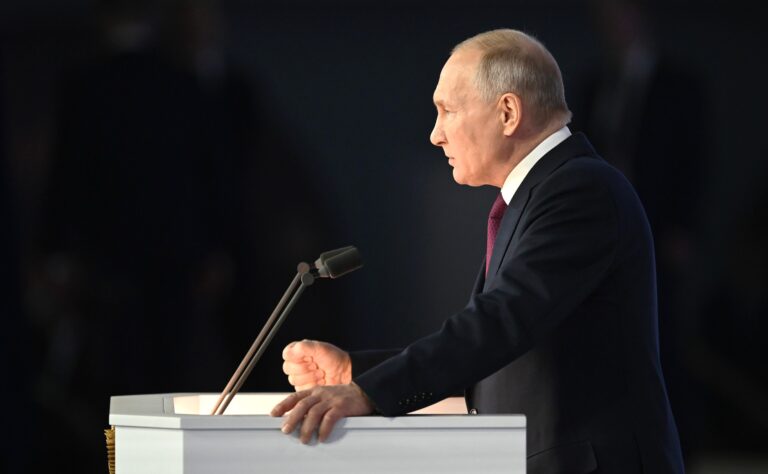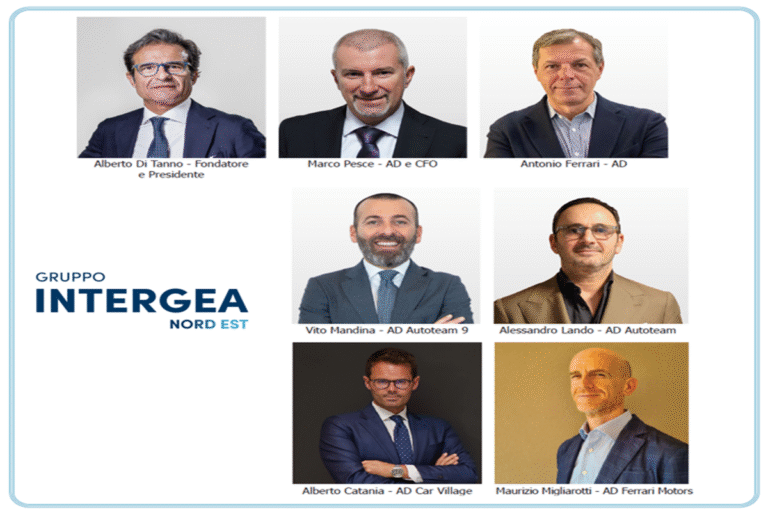What are Vladimir Putin’s objectives in this conflict? Why has the Kremlin embarked on a war that at first seemed impossible to many observers and today appears futile to do Russia’s own interests?
We can begin to make some considerations. Thus distinguishing between the reasons given by the Kremlin – mostly characterized by rhetoric and propaganda – and the deep, unspoken motivations for the war.
Table of Contents
Putin’s “reasons” of the war in Ukraine
The Kremlin has stated that it wants to “de-militarize” and “de-nazify” Ukraine. These short-term goals are coupled with a desire to prevent NATO enlargement in a country considered politically and historically part of Russia’s sphere of influence.
The war – which the Kremlin calls a “special operation” – would thus be defensive in nature. And would be motivated by the need to ensure the country’s security in the face of Western expansionism.
Not only that. The intervention would also be aimed at protecting the Russian-speaking population from a persecution against them (which the Kremlin does not hesitate to call “genocide”) hatched by the “Nazi” government in Kiev.
The NATO issue and the threat to Russian security
However, Ukraine has never hosted missiles or weapons aimed at Russia. And the country remained neutral until 2019. When, following the aggression in Crimea and Donbass, Poroshenko’s government decided to include NATO membership in the Constitution.
The country was then in the midst of an election campaign. And the call for NATO was therefore designed to gain support at the ballot box, and was not followed through. Indeed, the NATO enlargement affair had been frozen for some time.
It is true that in April 2008 the U.S. administration had made vague promises to Kiev about future membership. But the Russian invasion of Georgia in August of that year made it clear to the world that Moscow would not stand idly by. From then on, the issue was shelved and no NATO integration process (Membership action plan) was ever initiated.
In December 2021, the Kremlin demanded NATO withdrawal from all Central and Eastern European countries. Otherwise, the invasion of Ukraine would be inevitable.
A veritable ultimatum to which the Atlantic Alliance responded by proposing a moratorium on Kiev’s entry into NATO. And, mutual transparency on military maneuvers and conventional weapons deployments in East-Central Europe.
Read also: Sweden and Finland in NATO, the last two hurdles for the Nordic countries to join the Alliance
The “de-nazification”of Ukraine according to Putin
That of “Nazis in Kiev” is an old refrain to delegitimize liberal and democratic political forces. As early as 2004 Viktor Juščenko, later elected president of Ukraine on the back of the “Orange Revolution,” was accused of being a “Nazi.”
Since this did nothing to stop him, came the decision to poison him with dioxin. But the accusation of “Nazism” is an equally fatal poison, capable of penetrating public opinion both in eastern Ukraine and in Russia itself, thanks to propaganda spread by the Kremlin.
It is true that the most acute phase of the Maidan Revolution (2014) was dominated by far-right groups, such as the infamous Pravyj Sector. And, it is true that Oleh Tyahnybok, leader of the neo-Nazi Svoboda party, tries to credit himself as the leader of the protests. But it is also true that no far-right movement sits in parliament.
In the 2019 elections, Svoboda garnered 2.9 percent of the vote, Pravyj Sector 2.5 percent, and Oleh Liashko’s Radical Party 4.1 percent. We can say that Ukrainians do not identify with the far right, since they do not vote for it.
Putin’s real goals, a subjugated Ukraine
The unpredictability of the war and its developments makes it difficult to make predictions about Moscow’s possible political and militant goals. However, some elements seem to be becoming clear.
First, the Kremlin intends to bring Ukraine back under its control. Indeed, the country is central to Russian power designs.
“Ukraine is crucial for Russia to be a great power. Without Ukraine, Russia ceases to be an empire. But with a subordinate or subdued Ukraine, Russia automatically becomes an empire,” declared, back in 1994, Zbigniew Brzezinski, former security adviser to U.S. President Jimmy Carter.
Subduing Ukraine became necessary since the country had, in 2014, embarked on the path of Westernization.
Before that date, Ukraine was a subordinate country under a corrupt oligarchy close to Kremlin interests. Two revolutions, however, showed how a large part of the Ukrainian population disagreed with the political choices of the oligarchs enslaved to Russia. Liquidating Ukrainian statehood is the most obvious goal of the Russian invasion of Ukraine.
A model and a new world orfer to be erased
Despite many limitations, contradictions, and difficulties, post-Maidan Ukraine has created an open, plural society marked by a progressive increase in individual and political freedoms. And, a growing economy.
Ukraine’s historical and cultural proximity increases the risks of democratic contagion in neighboring Russia.
Preventing the spread of political pluralism and economic prosperity to neighboring countries, dangerous “models” for Russian public opinion, therefore becomes an imperative for the Kremlin.
Russia’s aggression of Ukraine has brought to light the Kremlin’s vision of international relations. A world made up of great powers – the United States, Russia, and China – sharing global power. Thus, by dividing it into spheres of influence.
Thus, it is not a multipolar vision, in which different political actors compete for world security, including emerging regional powers on the African, Asian or Latin American continent.
But, a twentieth-century version of international balances that excludes Europe, reduced to a playground for opposing powers.
What future for Europe?
In demanding the dismantling of NATO from the countries of Central and Eastern Europe, Russia has made it clear what ideas it has about the future of the old continent.
That is why the war in Ukraine is a threat to the entire Europe. Russia is aiming at the failure of the pro-European project.
And it has always done so, financing euroskeptic parties and spreading anti-European propaganda from its regime media.
And we must remember that, however imperfect and criticizable, the process of European unification represents the only way out of submission to the great powers. Namely, the American or the Russian, that have been influencing the political and economic life of the European continent for a century.












